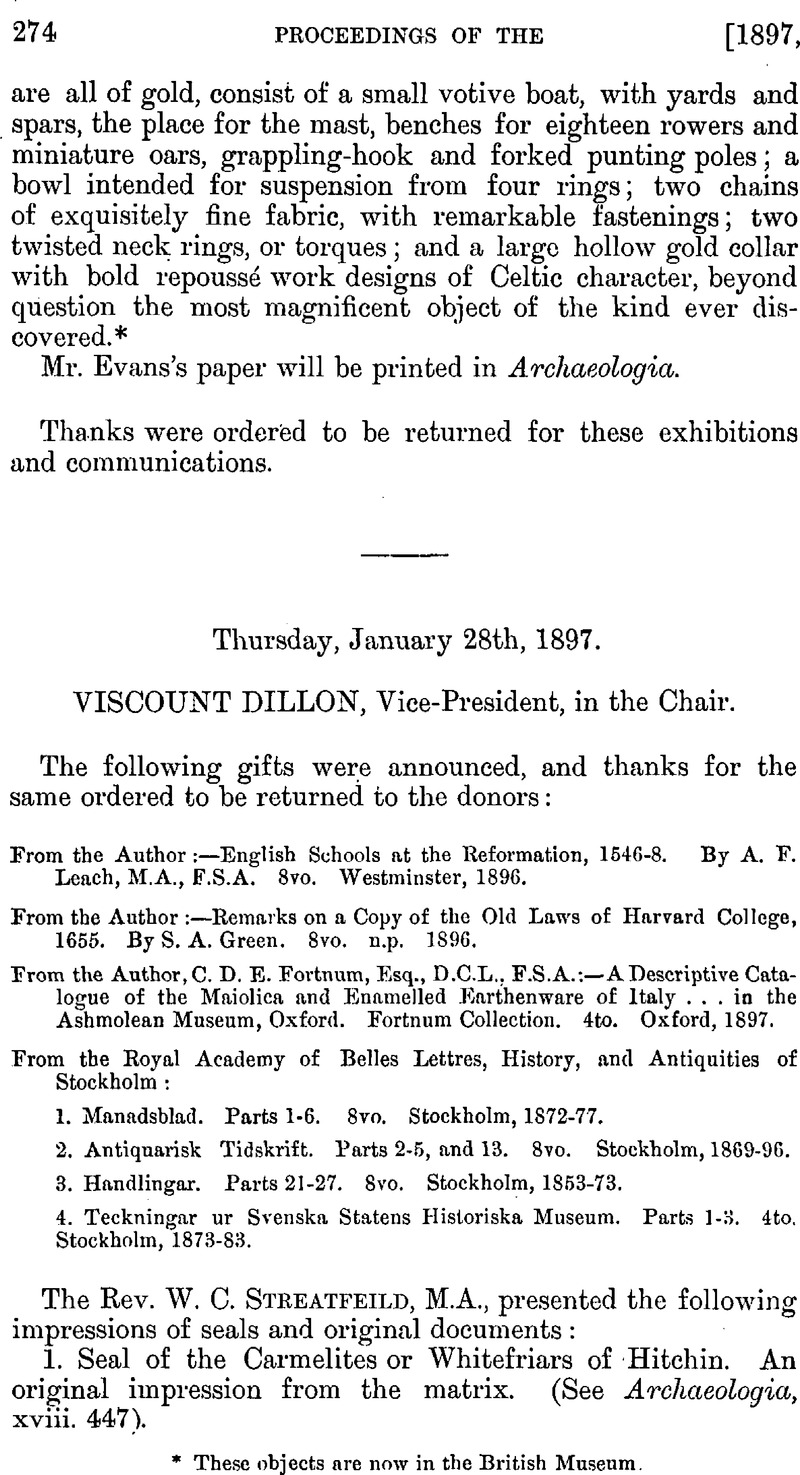No CrossRef data available.
Published online by Cambridge University Press: 10 May 2010

page 274 note * These objects are now in the British Museum.
page 277 note * Naqada, 50–1, plate lxxiii. 66.
page 279 note * These structures, as well as two others, are not shown on the Orilnance maps.
page 281 note * This name is given on the Ordnance map.
page 282 note * Since writing the above I have read in the Archaeological Journal, xi. 225, a description of a somewhat similar structure near the Maiden Way in the angle formed by the White Lyne River, passing through the parish of Bewcastle. It is called the “Shiel Knowe,” and is thus described : “The Shiel Knowe appears to have been a very extensive cairn, rising to a considerable height in the centre, and having three ridges or barrows running from it at smaller elevations, and diverging towards different points. The centre cairn is 22 yards on the slope on the north-west side, and the ridges or barrows about one-half of that height. The ridge or barrow running to the south-west is about 100 yards long ; the ridge to the south-east is about 140 yards long ; and the ridge to the north about 380 yards long. They are now covered with the green turf and heather, but stones show themselves in abundance.”
page 282 note † In draining the ground a short time ago on the north-west side of one of these islands, the trunk of a remarkably tall elm tree, 60 feet long, was discovered at a depth of 18 inches, lying horizontally with one end touching the island, the other reaching straight into swampy ground. This might have formed the bridge to a lake settlement, such as we may yet reasonably expect to find in such a suitable locality.
page 283 note * Gentleman's Magazine. 1853, part ii. 387–9.
page 283 note † Sec Gentleman's Magazine, October, 1852, p. 405.
page 283 note ‡ ii. 43.
page 285 note * At Somersby, near Horncastle, in Lincolnshire, is a three-armed or triangular stone cross on the top of a tall graceful column (shaft) 15 feet in height, which Alfred Rimmer figures and describes as quite unique in his Ancient Stone Crosses of England, page 80.
page 285 note † The Thing Priest provided the Thing banquet. W. C. Green, The Story of Egil Skallagrmsson, 214.
page 285 note ‡ That the meeting at the cross was the most essential in giving judgment is shown from the following extract from Primitive Folk-Moots: “The sayd Sixteens hath not any authority to make any orders, or to set any amercements touching ye commons, except there be and do meet att ye crosse nine of ye said Sixteens att ye time, and those nine may pinn ye rest of ye Sixteens.”— Archaeologia, xxxv. 472.
page 285 note § “That day men went to the ‘Thing-brink’ and spoke their pleadings. Also Egil and Thoestein with their whole troop went up to the ‘Thing-brink,’ and sat them down where they were wont to sit.” W. C. Green, The Story of Egil Skallagrimsson, 187.
page 285 note | At a meeting at Coveshoo in 822 two dukes were slain. G. L. Gomme, Primitive Folk-Moots, 58.
page 286 note * What resembled a cremated interment with broken Anglo-Saxon pottery animal bones and bits of iron, were found in the centre of each by the writer.